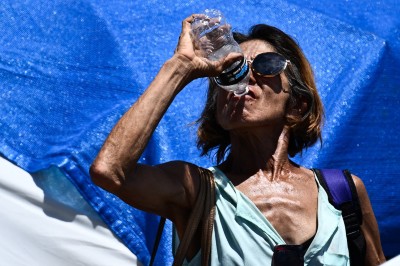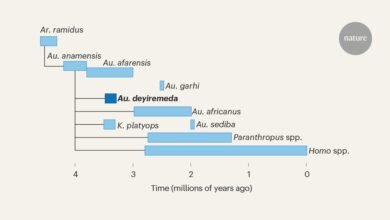
Global warming is costing lives, deepening health inequality and driving the spread of disease-carrying ticks and parasites across Europe, according to a major report.
The report reviewed hundreds of studies on the health effects of climate change — as well as the actions being taken in response — in Europe. Climate and health researcher Rachel Lowe and her colleagues tracked 42 indicators, including those on heat-related deaths, the spread of infectious diseases and trends in research on health and climate change.
Extreme heat harms health — what is the human body’s limit?
“We really need some drastic action to be taken by European countries to help keep the European population, and also populations across the globe, safe from the health impacts of climate change,” says Lowe, who is at the Barcelona Supercomputing Center and at the Catalan Institution for Research and Advanced Studies in Spain.
The report, published last month in Lancet Public Health1, is the second — after one published in 20222 — from a study called ‘The Lancet Countdown: Health and Climate Change in Europe’.
“The report emphasizes the alarming increase in mortality and morbidity linked to rising temperatures, and the proliferation of climate-sensitive diseases,” says Ana Raquel Nunes, a health and environment researcher at the University of Warwick, UK.
Researchers say that further studies should take a holistic approach to the climate–health nexus. “You can’t treat all these health impacts of climate change in isolation,” says Ruth Doherty, a climate-change and health researcher at the University of Edinburgh, UK. “We really need to know about how these multiple exposures affect the population.”
In three graphics, Nature outlines how a warmer world is affecting health and research across Europe.
Deadly heat
Lowe and her colleagues used mortality and temperature data, as well as prior evidence for how heat influences mortality, to estimate that, from 2003–12 to 2013–22, heat-related mortality increased by an average of 17 deaths per 100,000 people per year across Europe. The increase in heat-related mortality was higher in women compared with men (See ‘Heat kills’).
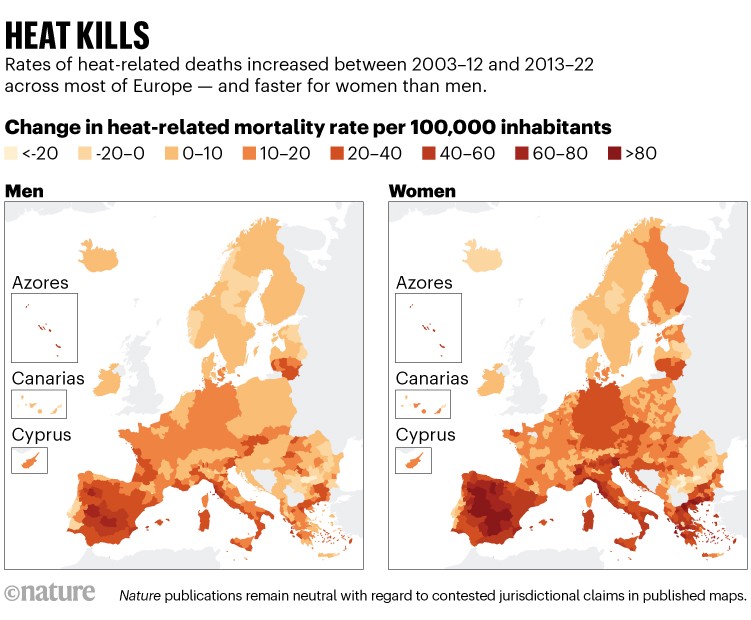
Source: Ref 1.
“Gender disparities may be explained by differences in terms of losing heat from the body and maximum sweat rates,” says Kim van Daalen, who studies climate change, disease and gender inequity at the Barcelona Supercomputing Center. Women might also generally be at greater risk of heat stress after ovulation, when they tend to have higher body temperature, she says.
Another factor that could be driving the gender gap is that women generally reach older ages than men, and older people are generally more vulnerable to heat-related stresses, says Lowe. Older people are also more likely to live alone, which puts them in greater danger from heat, she says.
Ticks and parasites
Warmer temperatures are enabling disease-carrying parasites to expand into more regions and spurring the growth of tick populations. One pathogen that is becoming more widespread owing to climate change is the single-cell parasite Leishmania infantum. It is transmitted to people when female sandflies (Phlebotomus sp.) bite human skin to feed on blood. The parasite usually causes skin ulcers across the body, which can be debilitating. In extreme cases, it can cause fevers and the swelling of the spleen and liver, and could be fatal.
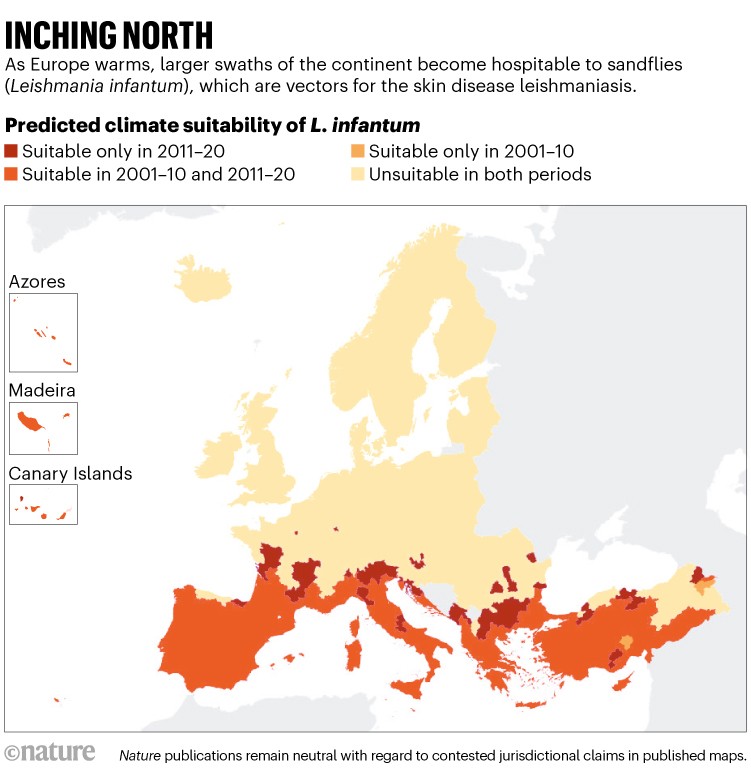
Source: Ref 1.
The researchers estimated that warmer and more-humid conditions across Europe have enabled sandflies and the parasites they carry to spread north into new territories. Their range was wider in the 2010s than in the 2000s. “Rising temperatures create more favourable conditions for sandflies to survive and reproduce,” says van Daalen. “Warmer conditions can also accelerate the life cycle of the parasite within sandflies,” she says (See ‘Inching North’).
The team also found that warmer temperatures have made Europe more suitable for the tick Ixodes ricinus, which can transmit a range of diseases when it bites people. “Tick-borne diseases, such as Lyme disease and tick-borne encephalitis, cause symptoms ranging from flu-like illness to severe neurological and cardiovascular complications, leading to missed work, long-term disability and substantial health-care costs,” says van Daalen.
Across most of the continent, I. ricinus found a more hospitable climate to feed and grow in 2013–22 than it did in 1951–60, as measured by the average number of months per year when temperatures were optimal for the juvenile stage of its life cycle.
Publishing boom
As the world warms, research on how climate change intersects with Europeans’ health has intensified, as seen in the number of papers tracked in the open-access database OpenAlex. The researchers counted hundreds of studies on how climate change and Europeans’ health intersect, published between 1991 and 2022. The majority of those studies focused on how global warming affects health, but some also looked into the greenhouse gases emitted by health-care systems, or how to protect people from climate change that is already happening (See ‘Hot topic’).
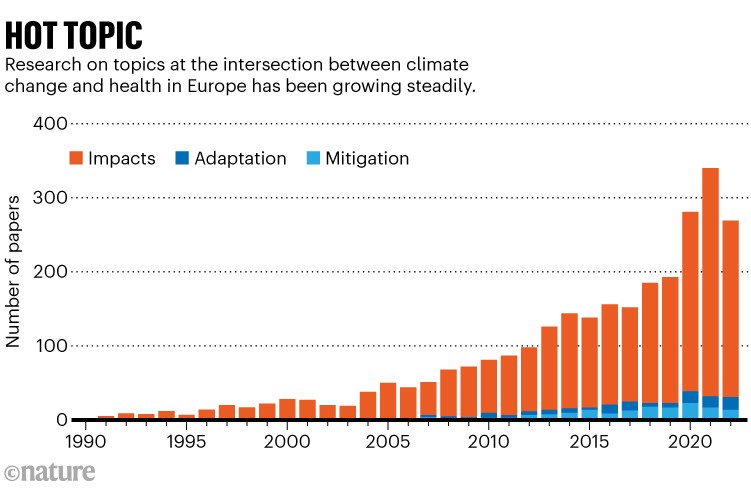
Ref 1.
The authors also found that around 2% of the studies published in 2022 on climate health referenced equality, equity or justice. “This highlights a substantial gap in research,” says van Daalen. “To properly respond to the climate-related health impacts, it is important to understand which populations are disproportionately affected and most at risk,” she says.
Source link

